Results 6,671 to 6,680 of 12096
Thread: Anandtech News
-
01-26-17, 05:20 AM #6671
Anandtech: Pioneer Announces Ultra HD Blu-ray Supporting BDR-S11J Drives
Pioneer has announced its first Blu-ray disc burners that officially support playback of Ultra HD Blu-ray discs. The drives will be Pioneer’s top-of-the-range ODDs and will thus support all the latest technologies from the company, but it is important to note that Ultra HD Blu-ray discs have a number of specific requirements and despite formal support for the latest media format, the drives will not transform any PC into a UHD BD player alone due to the numerous requirements (something that system integrators will have to ensure).
The New Drives
The Pioneer BDR-S11J-BK and the BDR-S11J-X are advanced optical disc drives in a 5.25” form-factor with the SATA 3.0 interface capable of reading and recording CD (CD, CD-R, CD-RW), DVD (DVD, DVD±R, DVD±R DL, DVD±RW, DVD-RAM) and Blu-ray (BD, BD-R SL/DL/TL/QL, BD-RE SL/DL/TL, BD-R LTH) discs. The drives have 4 MB buffer underrun protection (which is in line with other higher-end ODDs from competitors) and support 16x burning speed for BD-R SL (25 GB) media. Meanwhile, writing capabilities are not the key feature of the new ODDs. Pioneer advertises improved CD audio playback as well as support for Ultra HD Blu-ray discs as the key selling points of the new drives by way of updated technologies.
Usage of optical discs has been declining in the recent years, but those people who still use ODDs tend to demand features like fine reading/playback of scratched discs in general and audio CDs in particular (simply because they have large collections of appropriate media). To appeal to these people, the Pioneer BDR-S11J-BK and the BDR-S11J-X support the PureRead 4+ and Real Time PureRead functions specifically tailored to improve reading performance of scratched audio CDs. In addition, the more expensive BDR-S11J-X has further enhancements to improve playback quality of inserted audio CDs. Pioneer does not reveal too many details other than saying about finely tuned internal components (possibly to minimize vibration) as well as a feature called the “playback quality check.”
Another important capability of the Pioneer BDR-S11J-BK and the BDR-S11J-X ODDs is guaranteed support for Ultra HD Blu-ray discs. Technically speaking, to read a 100 GB Ultra HD Blu-ray disc, an ODD must support triple-layer Blu-ray disc with 33 GB layers and up to 128 Mbps data rate (i.e., 4x read speed). Therefore, any BDXL-supporting BD ODD has technical capabilities to read UHD BDs. However, not everything is that simple.
New Requirements for Ultra HD Blu-ray Video Playback
Meanwhile, to actually playback an Ultra HD Blu-ray disc, users will need:
- A PC that supports AACS 2.0 and Intel Software Guard Extensions (SGX)
- An appropriate optical disk drive,
- Software that handles UHD BD playback,
- Windows 10,
- A GPU that has an HDMI 2.0a output with HDCP 2.2 (and AACS2 supported by its driver, which eliminates current-gen standalone GPUs) and,
- A 4K TV/display that has an HDMI 2.0a input with HDCP 2.2.
While there are graphics adapters that support HDCP 2.2, as well as displays that also support it, at the time of writing there are no software packages that support playback of Ultra HD Blu-ray discs. CyberLink last year promised to update its PowerDVD 16 Ultra to support UHD BDs, but so far, this feature has not been formally added to the player. Now, while many contemporary BDXL-supporting ODDs can read Ultra HD Blu-ray discs (and allow users to browse files or write to them), manufacturers tend not to declare UHD BD playback support by their products. While it is possible that this is a software limitation, it is also possible that the limitation is hardware and currently available optical drives miss an important piece or two required to playback UHD BD movies even once appropriate software is available and they are installed into qualifying PCs. That said, Pioneer is currently the only ODD supplier that formally declares support for UHD BDs, at least in terms of files.
Apart from the ODD, the GPU (and its driver), the display, and the playback software, AACS 2.0 support seems to be a major concern. Its implementation on the PC is different from other consumer electronics, according to CyberLink. In a bid not to let AACS 2.0 encryption keys leak (as it happened in the past to the original AACS), AACS LA demands to handle their decryption in a secure hardware environment. To create secured private regions of memory that cannot be accessed by third-party applications (to prevent access to AACS2 keys), software developers have to use Intel’s Software Guard Extensions (SGX) instructions, whereas end users have to use platforms featuring the technology. Intel’s SGX has to be supported by the CPU, the OS and the application, but one of the problems is that not all modern processors support it. Intel first incorporated SGX into its Skylake CPUs in 2015, but not all of such chips support the tech: for example, some of the early higher-end processors have it disabled. Moreover, SGX has to be supported by motherboard’s BIOS and at present Pioneer recommends Intel 200-series based platforms (note that this does not mean that every Intel 200-series mainboard supports SGX). It is also important to note that not every Intel 200-series motherboard/system supports HDCP 2.2, which is required if the integrated is used. In fact, in the latter case Pioneer says that Intel’s HD Graphics 630 or more advanced is required, which eliminates low-power CPUs.
One of the peculiarities of playback via AACS2 is that it has to be supported by the whole system, not just certain critical components. This may not be a big problem for consumer electronics (even though it has its peculiarities there as well, for example, a requirement to pair a drive with its host that binds them at time of manufacture that will make lives of people who rip disks harder, but will also make it impossible to replace a failed ODD in a player), but for PCs things are going to get considerably more complicated. The content has to be encrypted using AACS2 throughout the whole data transfer from the optical disc to the decoder (i.e., the GPU for a PC) and then decoded in a secure environment. Since AACS2 mandates the use of secure environment at all times, decryption of Ultra HD Blu-ray content in a PC is now possible only on an iGPU that uses system memory with appropriate regions set aside for this particular task. Unless companies like AMD and NVIDIA invent their own SGX-like technology or manage to support Intel’s extensions in their drivers and by their discrete hardware, it will not be possible to use standalone GPUs for Ultra HD Blu-ray playback despite all their advanced media decoding capabilities. Quite naturally, this leaves systems based on Intel’s multi-core Core i7 HEDT processors without Ultra HD Blu-ray encoded playback content, but that is a price that PCs have to pay for AACS2.
Pioneer will bundle various programs with the BDR-S11J-BK and the BDR-S11J-X ODDs, including CyberLink’s PowerDVD 14 (not quite new), PowerDirector 14, PowerProducer 5.5, Power 2 Go 8, InstantBurn 5 and so on. The manufacturer did not reveal the official price of the new drives, but PC Watch reports that the BDR-S11J-BK and BDR-S11J-X will be priced at ¥22,000 ($193) and ¥35,000 yen ($307) respectively when they are available in Japan in late February.
Sources: Pioneer, PC Watch.
More...
-
01-26-17, 06:45 AM #6672
Anandtech: HP Recalls Over 100,000 Laptop Batteries Due to Potential Fire and Burn Ha
HP has expanded its voluntary recall of batteries due to fire and burn hazards. The batteries were used for various laptops sold under the HP and Compaq brands between March 2013 and October 2016. In total, the company has recalled over 140 thousand batteries in the U.S., Canada and Mexico.
The potentially faulty batteries were used inside such laptop families as the HP ProBook, HP ENVY, Compaq, Compaq Presario, and HP Pavilion. HP issues the first recall of 41 thousand batteries in June 2016, but this week the company extended the recall to include additional 101 thousand batteries. According to HP, these batteries have the potential to overheat, posing a fire and burn hazard to customers. To eliminate any risks, HP will provide a free replacement battery in each verified, eligible case. Meanwhile, for customers with 10 or more potentially affected batteries, HP has initiated a process to assist with the validation and ordering.
The affected batteries have the 6BZLU, 6CGFK, 6CGFQ, 6CZMB, 6DEMA, 6DEMH, 6DGAL, and 6EBVA prefixes in their bar codes. However, since not all batteries (with matching barcodes) and laptops are affected by the potential problems, the manufacturer advises to either download HP’s Battery Program Validation Utility that determines whether the particular battery may be faulty, or manually enter serial number and barcode of the battery into a special form on HP’s website.
In the recent years, multiple makers of notebooks and smartphones have run into problems with batteries that overheated, exploded or caught fire. In many cases such batteries have damaged property and caused injury. As a result, HP is taking the issue with the batteries very seriously and it is important to check whether your laptop is affected (even if you do not live in North America, where the recall is taking place).
Source: HP (via HotHardware).
More...
-
01-26-17, 08:44 AM #6673
Anandtech: The Silverstone ST30SF & ST45SF SFX Power Supply Review
In this review we are having a look at the SilverStone ST30SF and the ST45SF SFX PSUs. There are only a handful of good SFX PSU designs available and SilverStone is offering these low-cost models for $45 and $55 respectively (after rebate), making them the most aggressively priced high-quality SFX units currently available. Read on for our testing.
More...
-
01-26-17, 09:36 AM #6674
Anandtech: BenQ PD2710QC Announced: 27" 2560x1440 with Integrated USB Type-C Dock
Last week BenQ introduced its new display with QHD resolution that has an integrated USB 3.0 Type-C dock. Aside from the dock, the 27” monitor's big selling point is support for 100% sRGB. This goes in tandem with additional modes specifically aimed at CAD/CAM, Animation and Darkroom environments. The new display is among the first monitors with a USB-C connector as well as docking capabilities.
The manufacturer does not disclose too many details about the unit, but given that the monitor belongs to the PD-series from BenQ for designers and engineers, it is logical to expect it to use an IPS or a VA panel with 178° viewing angles and a 60 Hz refresh rate. Meanwhile, covering 100% sRGB should suggest that the display supports 1.07 billion colors (8-bit + FRC), which is enough for typical office and web design workloads. To further appeal to the target audience, the monitor features CAD/CAM, Animation, and Darkroom modes calibrated for particular types of applications, but BenQ does not disclose how this affects color accuracy.
The integrated USB-C docking station uses the same cable as the display, and BenQ's press release states that the dock is designed to charge a laptop or a mobile device up to 61W (that is compatible with DisplayPort alternate mode for USB-C) as well as expand its I/O capabilities over USB 3.0. This includes, 'multiple audio, video, network, USB ports and integrated speakers'. At present, the list of devices supporting DP alt mode for USB-C includes the Apple MacBook, the Dell XPS 12/13/15, the HP Elite X2 1012, the HP EliteBook Folio G1, the Microsoft Lumia 950/950 XL, the LG G5, the HTC 10 M10h and so on. In addition to the USB-C input, the display is also equipped with DisplayPort and HDMI input connectors.BenQ Display with USB-C Dock PD2710QC Panel 27" IPS or VA Native Resolution 2560 × 1440 Maximum Refresh Rate 60 Hz (?) Response Time unknown Brightness unknown Contrast unknown Viewing Angles 178°/178° horizontal/vertical (?) Inputs 1 × USB Type-C (DisplayPort alt mode)
DP 1.2
HDMI 1.4USB Hub USB 3.0 hub
'multiple audio, video, network, and USB ports'Audio Integrated speakers, audio in/out ports
BenQ did not announce exact pricing or availability timeframe for its PD2710QC. Currently BenQ sells the PD2700Q display for $359, which is not too much for a 27” QHD IPS monitor. While a USB-C hub is clearly a premium feature, it remains to be seen how much more BenQ will charge for it.
Related Reading:
- BenQ Launches the SW320: a 4K Display with HDR for Professionals
- EIZO Launches FlexScan EV2780: 27” 2560×1440 Display with USB Type-C Connector
- LG Announces 32UD99: 4K IPS Display with 95% DCI-P3, HDR and USB-C
- Lenovo Launches New ThinkPad Accessories: Docking And Displays
- Plextor Launches EX1 USB-C External SSD: Up to 550 MBps, 512 GB and LDPC
More...
-
01-26-17, 12:10 PM #6675
Anandtech: MSI Trident 3 Announced: A Core i7 Console
Over CES, MSI announced a new console-like PC called the Trident 3. The new unit packs the latest Intel’s Kaby Lake CPU, a NVIDIA GeForce GTX GPU, memory, an SSD and a hard drive. The system weighs just about three kilograms and its dimensions are smaller than dimensions of Microsoft’s Xbox One.
Current-generation game consoles, while closed systems ripe for optimization, can have difficulty providing performance sufficient for Full-HD gaming. Many console gamers prefer to play their games on HDTVs rather than on monitors, and so makers of boutique PCs were set on introducing console-like computers featuring gaming-grade hardware. Manufacturers of computer components were, for various reasons, reluctant to launch their own SFF gaming PCs for the living room until last year. However in the recent months we have seen a number of computers from motherboards/GPU vendors cards that are both small and powerful. MSI began to sell its Trident system in November-December timeframe without making any loud announcements, and this month the company upgraded its mini PC with Intel’s Kaby Lake processors but retained the chassis and the platform.
The MSI Trident 3 is based on a custom Intel H110 powered motherboard, along with a choice of Intel’s Core i7-7700 / i5-7400 processors and NVIDIA’s GeForce GTX 1060 / 1050 Ti graphics cards. By default the PC comes with 8 GB of single-channel DDR4-2400 memory (upgradeable to 32 GB), a 256 GB M.2 SATA SSD, one 1 TB hard drive and a 230 W external PSU. Despite the miniature size, the MSI Trident 3 is upgradeable: the CPU, the graphics adapter, the DRAM and storage devices may be changed. Due to lack of space inside, it is impossible to install a video card longer than 17 cm or additional drives, but such limitations are understandable. Moreover, keeping in mind that many SFF PCs use mobile components soldered to their motherboards, so using desktop-class components is a tradeoff between replaceability and size.
When it comes to connectivity, the MSI Trident 3 has a lot to offer: three USB 3.0 Type-A ports (two front, one rear), one USB 3.0 Type-C header (front), four USB 2.0 connectors (rear), Gigabit Ethernet, an IEEE 802.11ac Wi-Fi with BT 4.2 module, six display outputs (four HDMI, one DisplayPort, one DVI) to easily connect VR headsets and up to three monitors, 5.1-channel audio with Audio Boost 3 and Nahimic software enhancements and so on.MSI Trident 3 Specifications Mainstream High-End CPU Intel Core i5-7400
4C/4T
3 GHz/3.5 GHz
6 MB L3 Cache
HD Graphics 630
65 WIntel Core i7-7700
4C/8T
3.6 GHz/4.2 GHz
8 MB L3 Cache
HD Graphics 630
65 WPCH Intel H110 Graphics NVIDIA GeForce GTX 1050 Ti with 4 GB GDDR5 memory
NVIDIA GeForce GTX 1060 with 3 GB GDDR5 memory
NVIDIA GeForce GTX 1060 with 6 GB GDDR5 memoryMemory 8 GB of DDR4-2400 (one SO-DIMM installed)
Up to 32 GB is supportedStorage 256 GB SSD (SATA)
1 TB 2.5" HDDWi-Fi Intel AC3168 IEEE 802.11ac Wi-Fi + BT 4.2 Ethernet Intel I219V GbE Display Outputs 1 × HDMI Front
2 x HDMI Rear (1 x VR Link)
1 x HDMI (GPU)
1 × DisplayPort
1 × DVI-IAudio 5.1-channel audio (Realtek ALC1150)
Audio Boost 3,
Nahimic 2.5USB 1 × USB 3.0 Type-C (5 Gbps)
3 × USB 3.0 Type-A (5 Gbps)
4 × USB 2.0 Type-AOther I/O - Dimensions Vertical with stand: 353.73 × 251.35 mm × 97.56 mm
Horizontal without stand: 346.25 × 71.83 × 232.47 mmPSU 230 W OS Windows 10 Home
MSI’s Trident 3 can be installed both horizontally and vertically, depending on its owner’s tastes. Moreover, the system is equipped with RGB LEDs so to customize its look.
The MSI Trident 3 featuring Intel’s Kaby Lake CPUs will be available shortly with the basic configuration (Core i5-7400, GeForce GTX 1050 Ti 4 GB, etc.) starting at $899, while the more advanced builds will naturally cost more.
Gallery: MSI Launches Trident 3 Console PC: Core i7-7700, GeForce GTX 1060, 256 GB SSD_thumb.png)
_L_thumb.png)
_thumb.png)
_L_thumb.png)
_thumb.png)
_L_thumb.png)
Related Reading:
- Digital Storm BOLT X: A Kaby Lake-Based SFF PC with Custom Liquid Cooling
- Corsair’s Bulldog 2.0 Gets Kaby Lake-Compatible Z270 Motherboard, New Cooler
- ASUS VivoPC X: Core i5, GeForce GTX 1060, 512 GB SSD, 5-Liter Chassis, $799
- GIGABYTE's New Console: The 'Gaming GT' PC Launched with Core i7-K, GTX1080, TB3
More...
-
01-26-17, 03:13 PM #6676
Anandtech: AOC Announces the AGON AG352UCG 21:9 Curved Display: 35", 3440×1440, 100Hz
Last week AOC introduced its new high-end curved gaming display, the AGON AG352UCG. The new 35” monitor boasts a considerably higher resolution than AOC’s other large curved gaming display. The 3440×1440 resolution, size, curvature, a 100 Hz refresh rate and G-Sync support make the AG352UCG one of four curved displays with such combination of features. The other AGON AG352QCX 21:9 panel is a 2560×1080 resolution, but with a 200 Hz refresh rate.
The AOC AGON AG352UCG uses a 35” MVA panel with a 3440×1440 resolution, a 21:9 aspect ratio and a native 100 Hz refresh rate (which means that actual panel response times are perfectly aligned with its high refresh rate). We presume the panel is made by AUO (AU Optronics), which reportedly started volume production of such panels in September, 2016. General specifications of the monitor are similar to many other gaming displays: 300 nits brightness, 2000:1 contrast ratio, 178°/178° viewing angles, 16.7 million colors, a 4 ms response time (grey-to-grey) and so on.
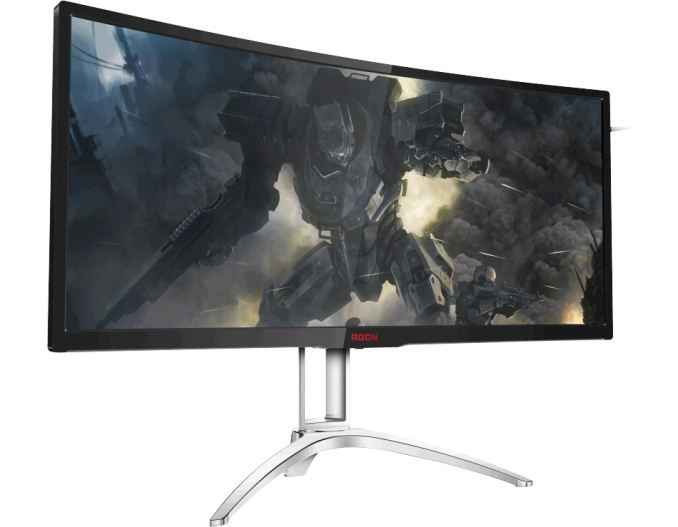
When it comes to connectivity, the AGON AG352UCG has a DisplayPort input and an HDMI input. To take advantage of NVIDIA’s G-Sync as well as the high refresh rate, the DP connector has to be used. The monitor is also equipped with a dual-port USB 3.0 Type-A hub and two integrated speakers.
As for visual aesthetics, the curved AOC AGON has a rather aggressive yet minimalistic design that emphasizes its gaming nature through a combination of sharp lines and colors. To add further atmosphere, the AG352UCG has six large LEDs with adjustable colors (red, green, blue) located on the back and on the bottom edge of the display.AOC's AGON Curved UWQHD Display with a 100 Hz Refresh Rate AGON AG352UCG Panel 35" MVA Native Resolution 3440 × 1440 Refresh Rate Range 30-100 Hz (DP)
NVIDIA G-SyncResponse Time 4 ms Brightness 300 cd/m² Contrast 2000:1 Viewing Angles 178°/178° horizontal/vertical Curvature 2000R Pixel Pitch 0.23 mm Inputs 1 × DP
1 × HDMI 1.4USB Hub 2-port USB 3.0 hub,
one port supports fast chargingAudio 2 W × 2
audio in/out portsPower Consumption Up to 70 W
The key selling point of the AGON AG352UCG is the combination of its features: the resolution (3440×1440), size (35”), curvature (2000R), a native 100 Hz refresh rate and using NVIDIA’s G-Sync variable refresh tech make up for a very interesting gaming display. At present, only three monitors can offer a similar set of technologies: the ASUS ROG Swift PG348Q, the Acer Predator X34 (this one uses an IPS panel with 60 Hz, but it is overclockable to 100 Hz) as well as the upcoming HP Omen X 35”. By launching the AGON AG352UCG, AOC contends for the highest end of the gaming monitor market and that is clearly an important milestone for the company.
AOC has not formally announced the AGON AG352UCG in the U.S. yet, so we do not know its ETA and MSRP. Meanwhile, Hexus reports that the display will land in the U.K. this March for the price of £799 (that's including 20% sales tax). Therefore expect the AG352UCG to cost around $1000 in the U.S. when it becomes available this spring. Considering the combination of its features (size, resolution, curvature, G-Sync support) and only three direct competitors that retail for $1100-$1300 today, it looks like AOC’s AG352UCG might be priced rather competitively.
Gallery: AOC Announces AGON AG352UCG Curved Display: 35 Inch, 3440×1440, 100 Hz, G-Sync





Related Reading:
- AOC Launches the AG352QCX: 35-Inch 200 Hz 2560×1080 Curved Display with Adaptive-Sync
- AOC P2779VC: 27” PLS Display with Qi Wireless Charging Base for $199
- Philips BDM4037UW Goes on Sale: 40 Inch 4K Curved Display for $800
- ASUS Announces Designo Curve MX38VQ: 37.5 Inch Curved Display with Qi Charging
- HP Announces Omen X 35-Inch Curved Display for Gamers
More...
-
01-26-17, 10:00 PM #6677
Anandtech: Intel Announces Record Quarterly Revenue And Full-Year Revenue
This afternoon, Intel announced their quarterly earnings for the fourth quarter of their 2016 fiscal year. Intel set a new record for revenue for this quarter, coming in at $16.4 billion. This is up 10% from a year ago. For the year, Intel brought in $59.4 billion, up 7% from their 2015 results. Intel’s gross margin fell 1.7 points to 60.9%, and they had an operating income of $12.9 billion, which is down 8% from a year ago. Net income was down 10% to $10.3 billion, and earnings per share fell 9% to $2.12.
Intel also reports Non-GAAP results, which exclude several expenditures, such as acquisition-related adjustments, write-downs, and the like. On a Non-GAAP basis, Intel had a gross margin of 63.1%, down 1.7 points, an operating income up 11% to $4.9 billion, and a net income up 4% to $3.9 billion. Non-GAAP earnings per share were up 4% to $0.79.
The gross margin impact is being attributed to a few things. Warranty and IP charges increased, as did spending on factory start-ups, due to the move to 10 nm coming this year, Client Computer Group non-platform costs, and the Non-Volatile Memory Solutions Group margins. Intel very much likes to keep their margins up above 60%, and for the moment they are still there even with these extra costs.Intel Q4 2016 Financial Results (GAAP) Q4'2016 Q3'2016 Q4'2015 Revenue $16.4B $15.8B $14.9B Operating Income $4.5B $4.5B $4.3B Net Income $3.6B $3.4B $3.6B Gross Margin 60.9% 63.3% 62.6% Client Computing Group Revenue $9.1B +2.2% +3% Data Center Group Revenue $4.7B +4.4% +3% Internet of Things Revenue $726M +5.3% +5% Non-Volatile Memory Solutions Group $816M +26% +26% Intel Security Group $550M +2.4% +2% Programmable Solutions Group $420M -9.7% -1% All Other Revenue $65M +47.7% +10%
Intel breaks the company down into several groups. The main group is the Client Computing Group, which as the name implies, provides CPUs, SoCs, and wireless and wired connectivity products destined for PCs. Although the PC market is still down, this group had revenue for the year of $32.9 billion, which is up 2%, but platform volume is down 10%. Platform selling prices were up 11%, which makes up the difference. For just the last quarter, Client Computing Group had revenues of $9.1 billion, up 4% from a year ago. Platform volumes were down 7%, offset by selling prices up 7%. Desktop platform volume was down 9%, while notebook volumes were flat. Desktop average selling price (ASP) was up 2%, and notebook ASP was up 3%. Considering the down market, Intel continues to drive revenue here. While good for them, it means prices are high, and some competition in this space might help out the consumer.
The Data Center Group also had a strong quarter, and year. For the year, they had revenue of $17.2 billion, up from $16.0 billion a year ago. For the year, Intel saw volumes up 3% and ASP up 4%. For the most recent quarter, the Data Center Group had revenues of $4.7 billion, which was up 3%. Platform volumes were down 3%, with ASP up 6%.
Intel is slowly building it’s Internet of Things group, which had revenues for the year at $2.6 billion, up from $2.3 a year ago. Revenue for this quarter was up 5% to $726 million. The Non-Volatile Memory Solutions group had revenues for the quarter of $816 million, up 26% from a year ago, and a full-year revenue of $2.58 billion, down slightly from the $2.6 billion a year ago. Programmable Solutions is new for Intel this year, with the purchase of Altera, and this segment had revenue of $420 million for this quarter, and $1.7 billion for the year. All other revenue was $65 million for the quarter, up from $59 million a year ago.
2016 was a strong year for Intel, although it was not without its challenges. Earlier this year, Intel decided to get out of the mobile SoC space completely, abandoning it’s Atom architecture for this segment. Atom does live on for low power PCs, but any of the tablets that used the Cherry Trail Atom have found themselves without a new CPU to move to. The death of Tick-Tock also had its first new entrant in Kaby Lake, although you could easily argue Devil’s Canyon was a similar situation. But they have several new exciting technologies coming to market as well, such as 3D X-Point, and of course the expected launch of their 10 nm CPUs later this year.
Looking forward to Q1 2017, Intel is forecasting a midpoint revenue range of $14.8 billion, with margin estimates at 62%.
Source: Intel Investor Relations
More...
-
01-26-17, 11:19 PM #6678
Anandtech: Microsoft Announces Q2 FY 2017 Results
This afternoon, Microsoft had its earnings announcement for the second quarter of their 2017 fiscal year. The results for this quarter are the first to contain results from their acquisition of Linkedin, which Microsoft purchased for $26.2 billion. For this quarter, the Non-GAAP results reflect an exclusion of the LinkedIn results, to better compare the rest of Microsoft’s earnings year-over-year, in addition to another set of Non-GAAP results which do include the LinkedIn results.
But on a GAAP basis, the numbers from LinkedIn are reported. Looking at the GAAP results, Microsoft had revenue for Q2 of $24.1 billion, up 1% from a year ago. Gross margin was 58.9%, up 0.4%, and operating income came in at $6.2 billion, up 3%. Net income for the quarter was $5.2 billion, up 4%, and earnings per share were $0.66, up 6%.
Microsoft typically defers the revenue from Windows 10 licenses over the life of the computing device, to adhere to current revenue recognition accounting guidance. Previously, a sale of Windows would be a sale of Windows, with all of the revenue for that license being accounted for right away. Microsoft is moving its guidance on this to recognize the revenue at the time of billing, rather than over the life of the device, but has not yet adopted this accounting practice, so the Non-GAAP results this, with $2.0 billion in Windows 10 revenue deferrals.Microsoft Q2 2017 Financial Results (GAAP) Q2'2017 Q1'2017 Q2'2016 Revenue (in Billions USD) $24.090 $20.453 $23.796 Operating Income (in Billions USD) $6.177 $5.225 $6.026 Gross Margin (in Billions USD) $14.189 $12.609 $13.924 Margins 58.9% 61.6% 58.5% Net Income (in Billions USD) $5.200 $4.690 $5.018 Basic Earnings per Share (in USD) $0.66 $0.60 $0.62
On a Non-GAAP basis, revenue was $26.1 billion, up 2%, or 4% in constant currency (CC – excluding the effect of foreign currency rate fluctuations). Excluding LinkedIn resulted in $25.8 billion, up 1%, or 3% CC. Gross margin for the quarter was 62%, up 0.7%, and excluding LinkedIn, it was 62.1%, up 0.8%. Operating income for the quarter was $8.2 billion, up 5%, and 8% CC, and excluding LinkedIn resulted in $8.4 billion, up 8% and 11% CC. Net income was $6.5 billion, up 6%, and 10% CC, with the exclusion results of $6.6 billion. Earnings per share came in at $0.83, up 9%, and 13% CC, and the results were $0.84, up 11%, and 15% CC, if you exclude LinkedIn.
Luckily, Microsoft is not expecting to break out the LinkedIn results in Non-GAAP results in the future, but for this quarter, there is quite a few extra numbers to evaluate. LinkedIn itself had $228 million in revenue for Q4, with an operating loss of $201 million, with the sale closing on December 8, 2016.
Microsoft has shuffled their product groups around a bit for reporting, and they now have three groups named Productivity and Business Processes, Intelligent Cloud, and More Personal Computing. For those that are interested, LinkedIn results will be in the first group.
Productivity and Business Processes is a big part of Microsoft, with revenues of $7.38 billion, up 10%, but this is a high margin business, featuring Office commercial and cloud products, Office 365 commercial and consumer, as well as Dynamics and now LinkedIn. This segment had an operating income of $3.26 billion for the quarter, down 1%. Microsoft gained 37% more Office 365 commercial seats this quarter, and 900,000 more Office 365 consumer subscribers. Microsoft doesn’t always give out the total seats for Office 365, but they did announce they were over 70 million seats in May of 2016, and Q2, so expect them to be closing in on 100 million seats. Dynamics is another key to this group, and the Dynamics products had 7% growth year-over-year, with Dynamics 365 growing over 200% year-over-year as people switch to the cloud version of Dynamics.
Intelligent Cloud is Microsoft’s server products, both on premise and cloud products. This segment had revenues of $6.86 billion, up 8% from a year ago. Operating income for this segment was $2.4 billion, down 7% from a year ago. Server products and cloud services saw revenue grow 12% year-over-year, but enterprise services fell 4%.Azure revenue was up 93% compared to the same time last year, and Microsoft has seen over double the use of Azure compute.
More Personal Computing continued to have the highest revenue per segment, at $11.82 billion, but it fell 5% compared to the same time last year. Margins are also not as high in this segment, with an operating income of $2.5 billion for the quarter. Microsoft has seen growth in its key areas though, despite the dip in revenue. Windows OEM Pro revenue was up 6%, and non-Pro was up 5%. Windows commercial products and cloud services had revenue gains of 5%. Surface revenue was down 2%, which is actually quite good considering Microsoft had launched the Surface Pro 4 and Surface Book in Q2 2016, so being almost flat year-over-year, when the product has not been refreshed, is decent. Surface had revenue of $1.3 billion for the quarter. Gaming revenue for the quarter was down 3%, to $3.595 billion. Lower console pricing, and lower console sales, contributed to the decline. Microsoft has found strong growth in their digital ecosystem though, with Xbox software and services growing revenue by 18%, and for the first time, digital transactions reached $1 billion for the quarter. Xbox Live active users grew 15% to 55 million as well, across all of Microsoft’s platforms. Search revenue was also up 10%.
The big hit to More Personal Computing continues to be the loss in revenue from the phone division, which was shuttered. Phone revenue was down 81% as Microsoft phases out of this market.
Overall it was a strong outing by Microsoft. They continue to advance their cloud platforms, and recently announced Microsoft Teams as a Slack competitor which is bundled with Office 365. The competitive pricing is likely going to win them a lot of customers with this new tool, and it will just be part of Office 365. They have continued to add value to this, on both the commercial and consumer lineup, and their work here has paid off well. Their move to the cloud has mostly overshadowed the client computing side, as far as on the financials, but More Personal Computing also had some strong growth, if you exclude the phones.Microsoft Q2 2017 Financial Results (GAAP) Productivity and Business Processes Intelligent Cloud More Personal Computing Revenue (in Billions USD) $7.38 $6.86 $11.82 Operating Income (in Billions USD) $3.00 $2.40 $2.50 Revenue Change YoY +10%, +12% CC +8%, +10% CC -5%, -4% CC Operating Income Change YoY -1%, +1% CC -7%, -4% CC +33%, +37% CC
Source: Microsoft Investor Relations
More...
-
01-27-17, 04:24 AM #6679
Anandtech: Toshiba Announces Plan to Sell Minority Stake In NAND Flash Production Bus
This morning Toshiba has announced that they will be spinning off their chip production business as part of a broader plan to sell off a minority stake in the business. With the company’s financial position in poor shape due to other business segment losses and accounting scandals, selling off a stake in the company’s profitable chip production business gives Toshiba the means to raise some much-needed capital. The move comes as the company confirmed last week that they were investigating just such a spin-off.
While official details on the spin off are still scarce, the company has indicated that they want to complete the transaction by the end of this quarter, March 31st. In that time the company will need to decide just how to structure the spin off, and more importantly find an investor willing to buy in to the new business. Toshiba has not announced just how much of the business they intend to sell, but unnamed sources have told Reuters that it will be a roughly 20% stake, leaving Toshiba still in control of what is their most profitable business.
For Toshiba, NAND flash production – the heart of their chip business – is strategically important because it enables the company to produce all types of storage devices in-house. Today, Toshiba makes HDDs, SSDs as well as various types of removable storage at its own fabs using its own components. The only other company that can manufacture all types of storage products using its own media is Western Digital, while companies like Samsung and Seagate lack either HDDs or NAND flash.
In fact Toshiba and Western Digital already operate the world’s largest NAND flash production complex in Yokkaichi, Mie prefecture, Japan. Formally, the manufacturing facilities belong to joint ventures between the two companies and WD buys wafers from Toshiba. It is not completely clear how the spinoff would work in this case and which parts of Toshiba’s business will be up for sale, especially as Toshiba still needs to find a buyer.
One of the important things to note is that production joint ventures owned by Toshiba and Western Digital are unlikely to make a lot of money directly because they sell wafers at near-cost to their owners who then earn profits by selling SSDs, memory cards, bulk NAND flash and other devices to their customers. Therefore, if Toshiba is to sell a stake in its semiconductor production business, it needs to sell it to a company that can then use the chips to build products and make some money. Obviously, Western Digital would be a perfect investor – and is considered to be the frontrunner – because it already has everything needed to produce actual storage devices, but ultimately there are other potential investors and Toshiba will need to take the best deal they can get.
Meanwhile, Toshiba’s plan to spin off its NAND flash business into a separate company may have a significant impact on the market of storage devices in general. Nowadays, Toshiba and Western Digital jointly invest in the development of NAND flash as well as manufacturing process technologies. Changes of the ownership may alter Toshiba’s investments not only in terms of money, but also in terms of R&D spending by the company. Though any such change will heavily depend on who eventually buys the business stake from Toshiba.
Related Reading:
- Toshiba Finalizes Plans for New 3D NAND Fab: Coming Online in 2019
- The Toshiba OCZ VX500 (256GB, 512GB, 1024GB) SSD Review
- Toshiba Announces New BGA SSDs Using 3D TLC NAND
Sources: Reuters, New York Times
More...
-
01-27-17, 06:17 AM #6680
Anandtech: The Huawei Mate 9 Review
Huawei has steadily improved its flagship Mate phablets while adhering to the same blueprint: large screen, slim bezels, aluminum chassis, excellent system performance and battery life. They’ve also shared some of the same shortcomings, namely underpowered GPUs and poor display and camera quality. The Mate 9 manages to improve upon the previous generation’s strengths, while fixing at least some of its issues.
More...
Thread Information
Users Browsing this Thread
There are currently 46 users browsing this thread. (0 members and 46 guests)




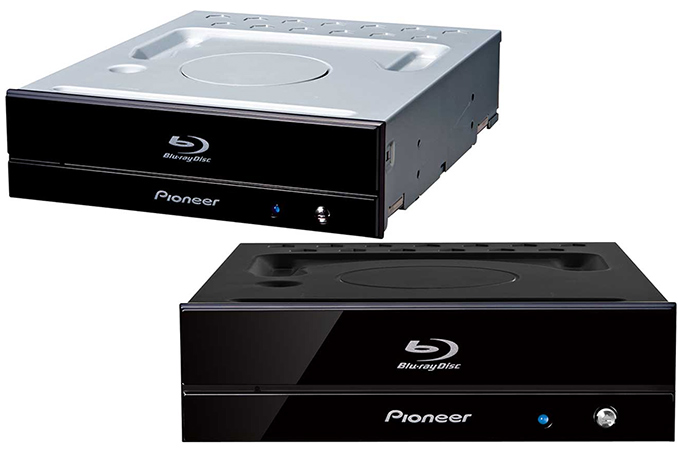
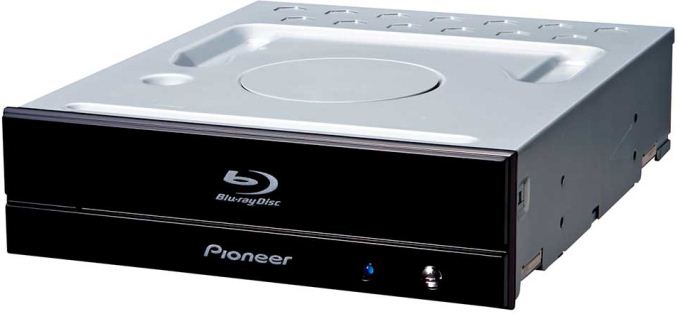
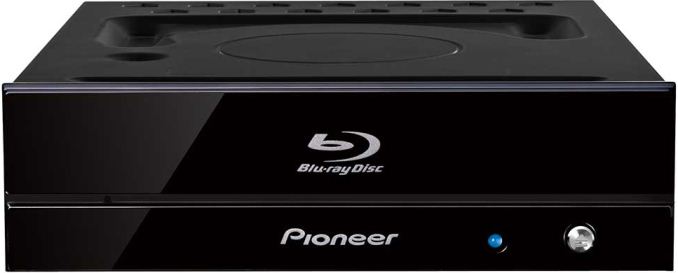


 Quote
Quote





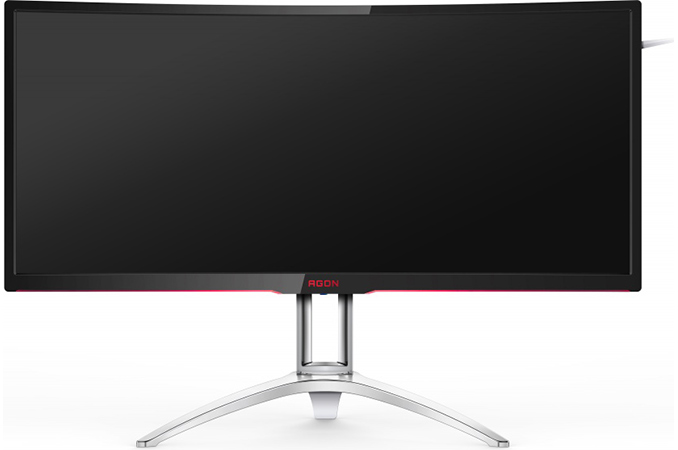



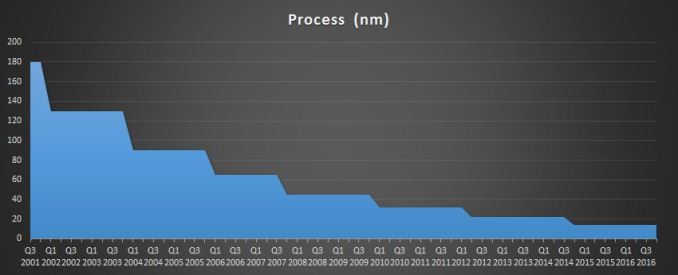

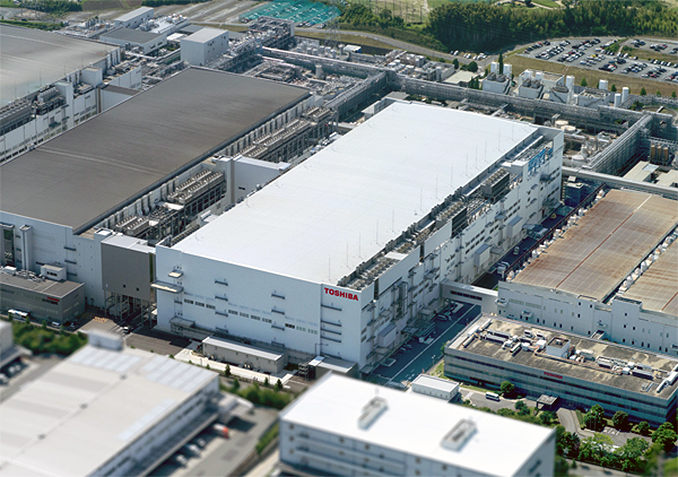

















Bookmarks